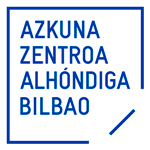
Habana, Cuba, 1982. Master’s degree in Innovation and Design at the Higher Institute of Design (La Habana, 2006). Since 2004 he designs posters for the Film Institute (ICAIC). In 2011 he was the co-author of the books Soy Cuba: Cuban Film Poster from after the Revolution (I am Cuba: Cuban Film Poster from after the Revolution, Trilce Ediciones) and Ciudadano Cartel (Citizen Poster, Ediciones ICAIC). Since 2010 he is a professor at the University of La Habana and a designer at the Editorial UH.
In 2010 he was awarded the artistic creation scholarship of Estudio 21 at the Centre for the Development of Visual Arts in La Habana and in the periods from 2016-2017 and 2019-2020 he was an artist in resident at the Spanish Royal Academy in Rome. Between 2018 and 2020 he has exhibited in the Kennedy Center, Washington D.C.; at the Matadero Cultural Centre, Madrid; California Art Museum, Pasadena; Fowler Museum, UCLA; Museum of Decorative Arts, Paris and in La Habana at the National Museum of Fine Arts, Factoría Habana, Fábrica de Arte Cubano, Ludwig Foundation, Estudio 50 and Galería 23 and 12.
His work has been exhibited in the design biennials of Madrid and La Habana and poster biennials in Lublin, Trnava, Ecuador and Bolivia, and forms part of the collections of the libraries Margaret Herrick and UCLA; National Library of Cuba; the CSPG, the Film Archives of Cuba and the Museum für Gestaltung, Zürich, Switzerland.
Share:
On a public and urban level, Rome today is visually insightful in so far as citizen disobedience. Multiple visual expressions of social nonconformity co-exist in this city: from graffiti, sticker and stencil art to vandalism on visual communication.
Visual, audio-visual, and sound registers were undertaken of these expressions in their context using tools of visual anthropology and social research. A diachronic analysis of this archive enables an approach to the socio-cultural fabric of the city and ends up with the making of a work, executed in a range of supports: from editorial design, to stickers, to the motion graphics, 3D printing, stencil art and video; each execution is a point of view in the building up of a dialogue about the art institution in the #NuevaNormalidad (New Policies).
The innovative and pioneering nature of this project consists in offering an “other” vision of a social and public reality in so far as heritage in such an incomparable, historical, and artistic city as is Rome, hence establishing reconciliation with a new public, especially with the new generations and their concept of citizen art. Thus, this project reveals the existence of a city understood as a live body.
The fact that the Tempietto of Bramante is circular and that it is on a hill makes it an ideal geographical centre for the construction of the outskirts. From the Tempietto on, the paths go through, first the Trastevere, then Regola, Parione, Ponte, Pigna, Saint’Eustachio, Campitelli and Saint’Angelo, further Trevi, Portuense and Testaccio. Throughout the project, hundreds of photographs make up an archive of the visual manifestations of citizen disobedience (visible on Instagram under #roma_inconforme).
In the process, the artistic research was split: one path was developed based on documents, the creative processing of gathered material and the production of the work through photography, the serigraphy, and the editorial design. The other path is the relocation of the Tempietto as an object, from its execution with aesthetic codes used in the practice of urban art: stencils, stickers, 3D printing and videos. Everything disseminated through social media, understood as the new platform for visual circulation.
The visual urban story was quick to give a response to the post COVID-19 sanitary measures. That reality is incorporated in the work as the residency comes to an end just as the dialogues of the new normality are arising.
To return to Rome is to resume a life that had been put on pause. Returning to the Academy is to return home, only that this home is also a workplace, museum, concert hall, and has its own day-to-day built into its delicate balance of the habits and customs of its dwellers, a process that, without being perfect, allows for the construction of new traditions every year.
With my fellow grant holders I learnt, conversed, argued, and had fun. I collaborated with some and with all, we built new experiences. My project and my artistic practice were enriched with every exchange. It was a delightful surprise to find them in the presentation of my portfolio and in the projects that I developed in Rome in an event coordinated by the professor Francesca Gallo for the MLAC (Museo Laboratorio de Arte Contemporáneo – Contemporary Art Laboratory Museum) in December/2019.
In March/2020 the health emergency obliged me to advance my return to La Habana. The support and solidarity of the team at the Academy and my fellow grant holders helped me with my return to La Habana and the continuation of the Roman project.
